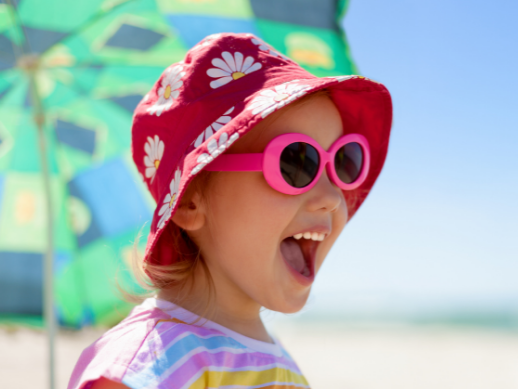
As we in Australia move towards our scorching, hot summer, it is extremely important that everyone keeps safe by being sun smart!
Skin cancer is the most common cancer diagnosed in Australia.
The sun’s ultraviolet (UV) radiation is the major cause of skin cancer. UV damage also causes sunburn, tanning, premature ageing and eye damage. The good news is you can prevent damage – and skin cancer – by being SunSmart.
Sun protection is recommended whenever UV levels reach 3 or higher. Below 3, sun protection isn’t recommended unless you are outdoors for extended periods or near reflective surfaces, like snow.
Australians shouldn’t expose themselves to potentially harmful UV to get more vitamin D. Evidence suggests that prolonged sun exposure doesn’t cause vitamin D levels to increase further but it does increase your risk of developing skin cancer. When UV levels are 3 or higher, most Australians get enough vitamin D with just a few minutes of sun exposure while doing everyday tasks.
Unlike the sun’s heat and light, we can’t see or feel UV radiation, so check the UV for your location on the free SunSmart app or on the Bureau of Meteorology website.
According to the Cancer Council, the best protection for sun safety, is to follow the five sun smart steps;
- Slip on covering clothing
Choose clothing that covers as much skin as possible, for example, collared shirts with long sleeves. Some clothing may carry an ultraviolet protection factor (UPF), which is a guarantee of how much UV protection a fabric provides.
- Slop on SPF 30 (or higher) broad-spectrum, water-resistant sunscreen
Apply a generous amount of sunscreen to clean, dry skin at least 20 minutes before you go outside. The average-sized adult will need a teaspoon of sunscreen for their head and neck, each limb and the front and back of the body. That’s about seven teaspoons (35mL) for a full body application. Reapply sunscreen every two hours or after swimming or excessive sweating.
Remember, sunscreen is not a suit of armour and should be used with other sun protection measures.
- Slap on a hat
Choose, a broad-brimmed, legionnaire or bucket style hat which shades your face, nose, neck and ears, which are common sites for skin cancers. Caps and visors do not provide enough protection.
- Seek shade
Use trees, built shade structures, or bring your own (such as a sunshade tent)! Shade reduces UV radiation, but it can still reach you via reflection, so make sure you use shade in combination with other sun protection measures.
- Slide on some sunglasses
Sunglasses and a broad-brimmed hat worn together can reduce UV radiation exposure to the eyes by up to 98%. Sunglasses should be worn outside during daylight hours. Choose close-fitting wraparound sunglasses that meet the Australian Standard AS/NSZ 1067.
Our nation loves to be out and about during the summer when the sun is shining bright and so many of us are susceptible to UV radiation as we head out to the number of beautiful beaches across Victoria.
It is important that all individuals take into account the 5 S’s when they plan on going for a swim in their backyard pool, outdoor pools at centres, and beaches across the state.
VICSWIM is looking forward to seeing our waters filled with people having fun and keeping safe, in what will be a hot summer heading into 2022.

